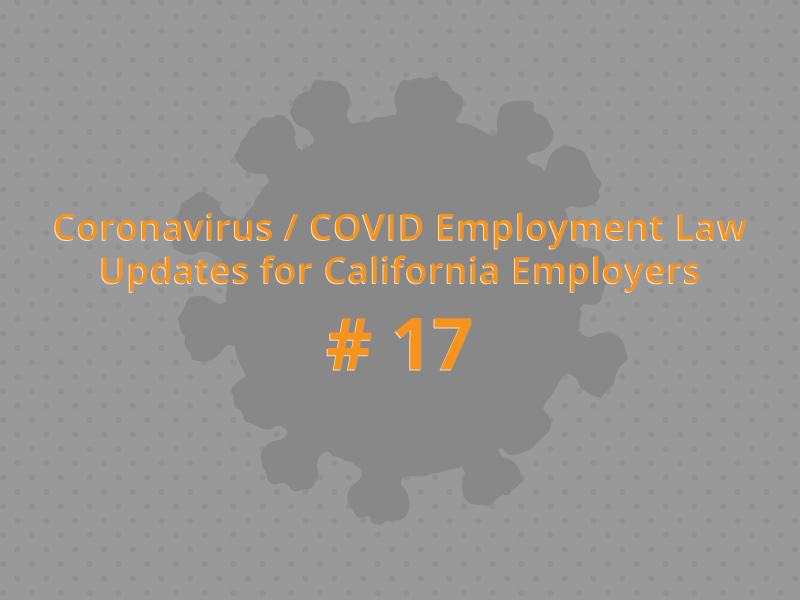California Governor Gavin Newsom and the California Department of Public Health issued a new order in response to escalating COVID-19 infections. A press release detailing the measures is here. The CDPH Order is here.
As a result of the new order, many businesses that recently re-hired workers and re-opened, even partially, must now close again for an indefinite period of time. As things stand now, the state-wide part of the order applies to the following businesses:
- Bars, pubs, brewpubs, and breweries, whether operating indoors or outdoors, shall be closed across the state, unless an exception applies (as described in the linked order).
- Restaurants may not offer Indoor dining;
- Wineries and tasting rooms are limited to outdoor service
- Family entertainment centers and movie theaters may not operate indoors. Drive-in theaters may continue to operate.
- Zoos and museums may not offer indoor attractions, but may continue to operate outdoors when possible
- Cardrooms must discontinue indoor operations.
There are more details regarding the above list in the order linked above.
In addition to the state-wide actions, the order imposes restrictions for certain counties deemed higher risk. There are 29 such counties as of now, representing about 80% of the state’s population, on the state’s “monitoring list,” which you can find here.
These counties are subject to additional closings because they have been on the “monitoring list” for three consecutive days. In those counties, the following businesses / activities must discontinue indoor operations:
- Gyms and Fitness Centers
- Places of Worship
- Protests
- Offices for Non-Critical Infrastructure Sectors
- Personal Care Services (including nail salons, massage parlors, and tattoo parlors)
- Hair salons and barbershops
- Malls
The order itself contains the exceptions and guidance, if any, for outdoor operations applicable to the listed businesses.
This order is effective for an indefinite period of time, subject to further order of the CDPH. The order is otherwise silent about what happens if a county clears the “monitoring list” and then returns to the list. The “monitoring list” may change as well as new counties are added or deleted.
It goes without saying that this action will have a profound effect on already besieged employers and workers. The indefinite duration of the order is especially vexing from an employment law perspective. Employers that re-hired workers only a few weeks ago must now decide whether to conduct layoffs again, or wait to see whether the CDPH changes its guidance yet again. Layoffs mean selecting whom to layoff and the potential for discrimination claims, final pay and separation paperwork on the day of layoff, potential federal and California WARN Act issues, how to address those workers on “paid sick leave” or extended family leave, how to treat benefits such as health care, and more. And now counties such as San Francisco have “rehire” requirements. Some of these issues are addressed in our early posts in this series, written during the first round of closures.
As a corollary, it is hard to know what is “legal” and what would be deemed a violation of laws that were not designed for decisions by central government instead of management. We wish we could provide all the answers. Anyone who claims to have all the answers is lying to you. The most we can do here is raise some of the questions that must be considered. Although we say it a lot, it bears repeating: seek advice of competent counsel before making decisions that may give rise to unanticipated liability.



 Trending
Trending